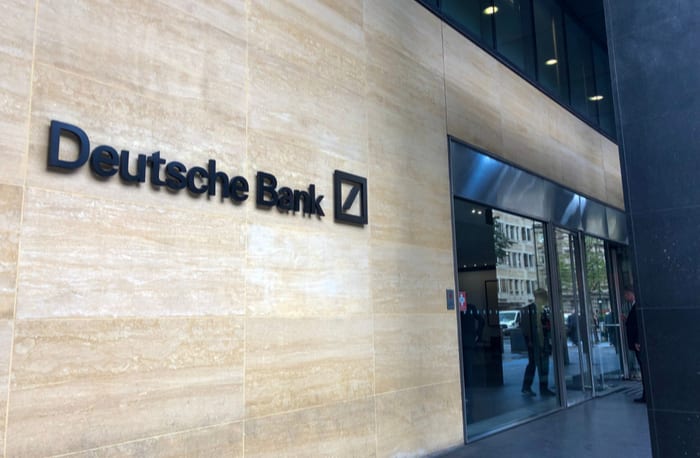Deutsche Bank has remodeled its business model numerous times after the financial downturn. Despite numerous attempts, the bank has been largely unsuccessful in reviving its earnings. While the bank’s European and American counterparts were able to show robust investor returns to shareholders for several years now, Deutsche Bank maintains to battle and recently introduced plans to enforce additional cuts to its equity trading business.

Trefis has highlighted the changes in the financial institution’s investment banking commercial enterprise inside the interactive dashboard – How Has Deutsche Bank’s Investment Banking Business Changed Over The Last 10 Years, And What’s The Forecast Over The Next 5 Years? You can regulate any of our key drivers to gauge the impact modifications might have on its valuation. Additionally, you could see extra Trefis facts for financial services agencies here.
How Has Deutsche Bank’s Revenue Composition Changed Over The Last Decade And What’s The Forecast?
Before the economic disaster of 2008, the bank’s Investment Banking Division ( Sales & Trading and Advisory & Underwriting Services) contributed the kind of 60% to Deutsche Bank’s general sales. After the crisis, DB decided to scale back its buying and sell the business and accelerated its awareness of other stable revenue drivers. As evident from 2014 numbers, Deutsche Bank’s Investment Banking contribution to total revenues plunged to 43%, with the trading table constituting about 34% to overall sales.
IB division now bills for roughly 36% of DB’s overall revenues while the Trading division’s contribution has been reduced to less than 30%. The lately introduced cuts to equity buying and selling will drag the contribution of funding banking sales further over the coming years. Trefis tasks the contribution determine to decline to around 26% in 5 years.
How Have Key Operating Metrics For Deutsche Bank’s Investment Banking Business Changed Over The Years?
As evident from the chart beneath, the CIB division’s sales reached an excessive $23.3 billion in 2010 as upbeat marketplace situations helped the income and buying and selling table obtain file sales. However, given that 2010, CIB revenues have declined at a median annual price of 7% and now stand underneath $11billion.
Moreover, the financial institution’s trading portfolio has taken a hit since the economic disaster. As a result, total buying and selling belongings have declined at a median annual fee of 12% due to 2007, and as of 2018, general trading belongings stood at simply $194 billion.
Large fees associated with its lengthy-time period reorganization plan coupled with massive settlement charges from its wonderful legal troubles have reduced the department’s margin from approximately 29% in 2014 to just 4% in 2018. Trefis expects the margin to enhance and reach about 15% in the next 5 years – a discern that is approximately 20 percent points underneath its pre-recession level.
How Has The Bank’s Sales & Trading Revenues and Yield Changed Over The Last Decade?
Deutsche Bank’s choice to reduce its trading business has ended in sales declining from $20 billion in 2010 to about $8.5 billion in 2018. The buying and selling desks now contributed much less than 30% to general revenues in preference to about 53% a decade ago. Trefis estimates this contribution to say no to around 26% in 2024.
Moreover, Deutsche Bank’s FICC trading yield has averaged around 5% over the past decade. Although the financial institution’s FICC trading revenues had been reduced with the aid of greater than 50% on account that 2010, the financial institution has been able to hold its FICC yield intact. Further, the bank’s equity yield has largely been upbeat for the reason of the crisis, averaging around 8%.
How Does The Change In Sales & Trading Revenues For Deutsche Bank Compare With That For Its Peers?
In 2012, UBS introduced that the funding bank would consider its conventional strengths and go out an awful lot of its fixed-earnings buying and selling a now not an economically profitable business. Since 2012, UBS has substantially reduced its trading operations, and trading revenues now account for simply 18% of general sales.
Credit Suisse underwent a comparable restructuring alongside the strains of its large Swiss peer, UBS. Credit Suisse decreased its buying and selling sports in large part after 2015. As a result, the trading division now contributes 24% of Credit Suisse’s total revenues compared to nearly 34% before the crisis.
JPMorgan, on the other hand, has continued to acquire growth throughout operations. In truth, the contribution of trading revenues to the financial institution’s general revenues has improved barely after the financial crisis due to Bear Stearns’ acquisition at the peak of the downturn. Trading sales now account for approximately 18% of the financial institution’s general revenues.

